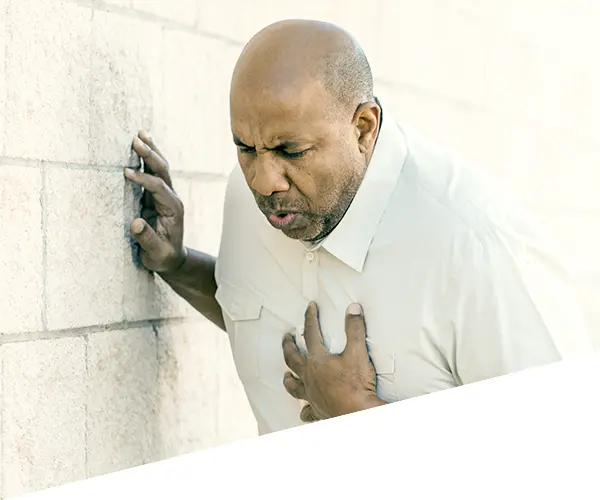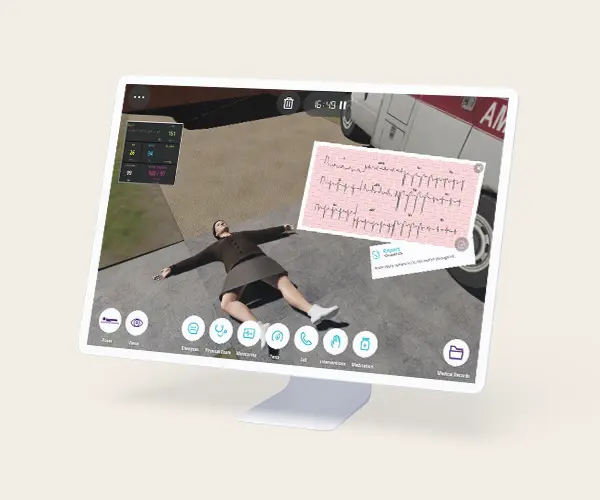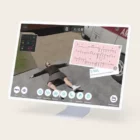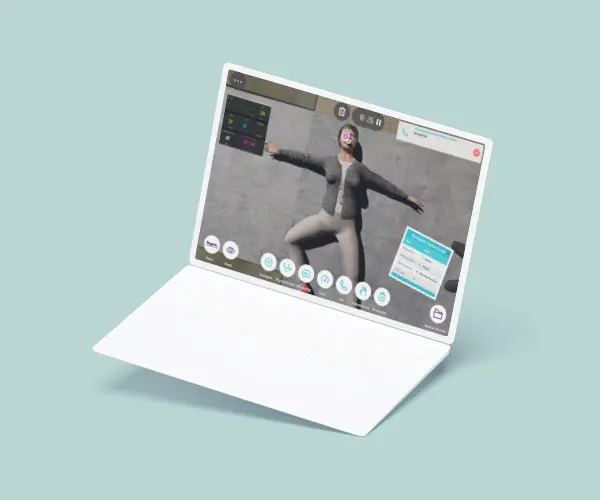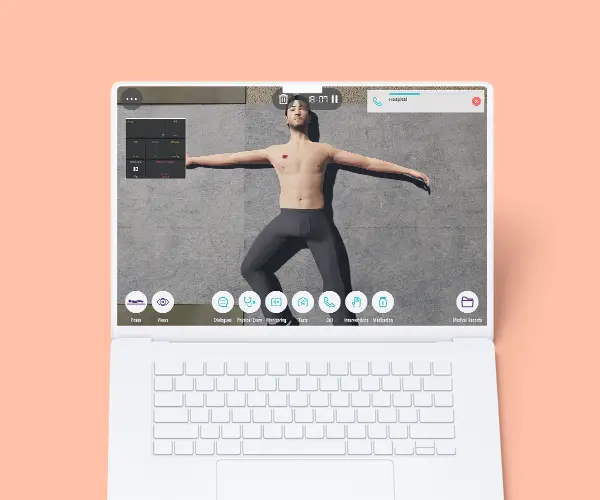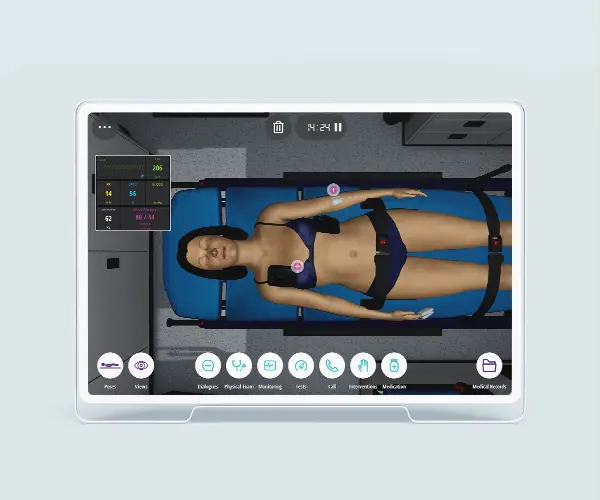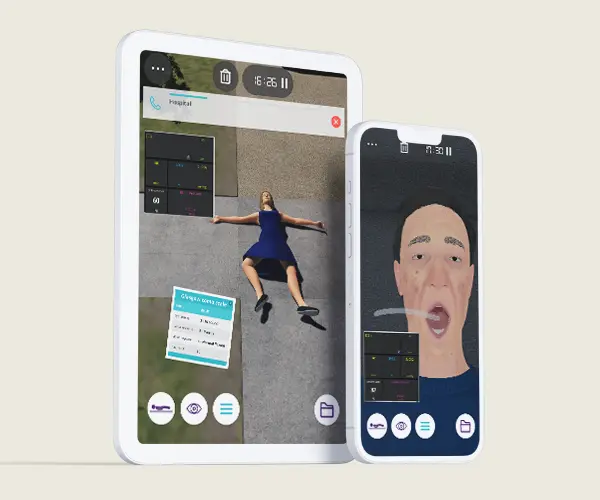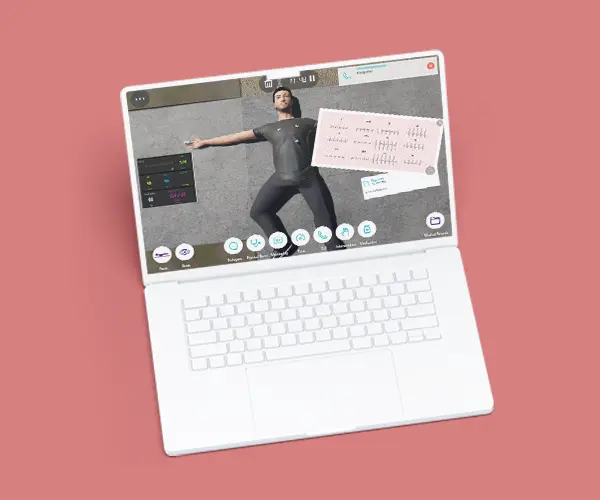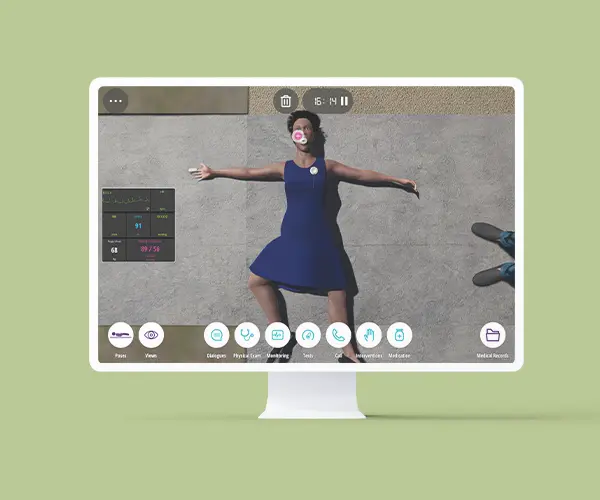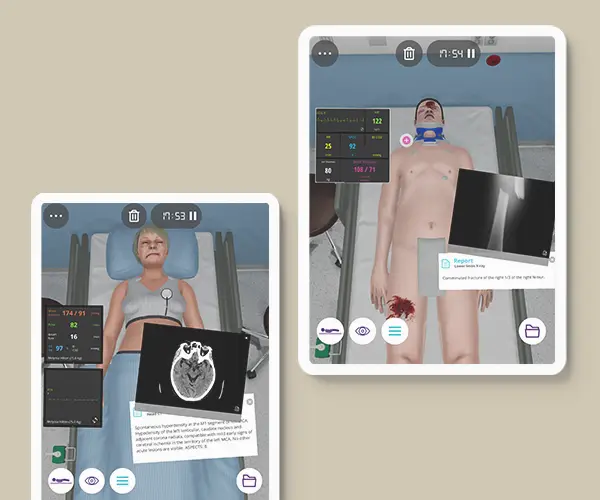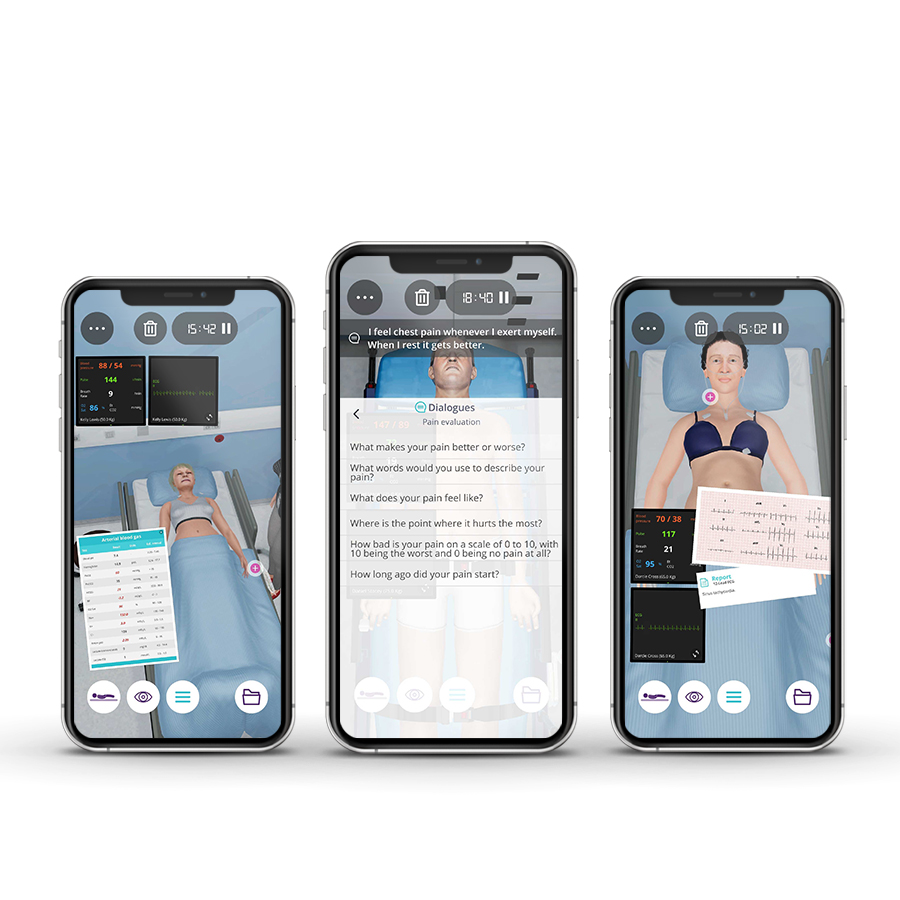Description
Course type: Online; Self-Paced
Specialty: Respiratory/Cardiology
Language: English / Portuguese
Resources: Handbook
Level: Basic
Target: EMT
Modules: 5
Durations: 2 months
Time Effort: Up to 110 min per module
Certificate: Yes
Course Description
Cardiovascular and respiratory diseases are the leading causes of premature death worldwide. The functions of the cardiac and respiratory systems are closely linked and regulated in order to maintain blood pressure, the supply of oxygen to tissues, and the removal of carbon dioxide. Dysfunctional breathing and altered breathing patterns caused by certain pathologies can produce adverse effects on the cardiac system.
The Cardiovascular and Respiratory Emergencies course aims to help health professionals develop their skills regarding changes in breathing patterns and dysfunctions and diseases in the cardiac system through virtual patients.
EMTs will consolidate knowledge and reinforce critical thinking and decision-making skills by being exposed to Acute Coronary Syndrome, Arrhythmias, Asthma, and Respiratory Infection scenarios in a simulation environment.
Course Overview
- 5 Modules
• 5 virtual patient cases of a basic level of complexity. - Average Time to practice (per module)
• Clinical Scenario: 20 minutes per attempt (3 attempts: 60 minutes)
• Final attempt (if applicable): 20 minutes
• Multiple Choice Question: 5 minutes
• Feedback Area: 10 minutes
• Learning Objectives and Scientific References: 5 minutes - Online, Self-paced
You have up to 2 months to complete the 5 modules at your own pace. - Certificate of Completion
Learning Objectives
• Assess the security of care;
• Develop skills in assessing the patient’s clinical history applying SAMPLE;
• Assess pain using OPQRST;
• Recognize and treat the airway obstruction;
• Identify the respiratory disease;
• Identify the cardiac disease;
• Call a higher level of emergency medical services for transport.
Clinical Competencies
Safety
• Universal safety measures procedures
• Promote patient safety
Airway and Breathing
• Airway – naso/oropharyngeal
• Oxygen therapy (nasal cannula; non-rebreather; high-flow mask)
• Pulse oximetry
• Suctioning – upper airway
Circulation
• Cardiopulmonary resuscitation (CPR)
• Assess and interpret pulse (rate, rhythm, and volume)
• Cardiac monitoring – 12-lead ECG
• Defibrillation – automated / semiautomated
Medication- Routes
• Aerosolized / nebulized
• Intramuscular – auto-injector
• Intranasal – unit-dosed, premeasured
• Mucosal / Sublingual
• Oral
Module 1 – Chest pain while walking
Context: Chest pain affects 20% to 40% of the general population during their lifetime. Chest pain or discomfort is usually associated with Acute Coronary Syndrome (ACS). ACS is represented by either ST-segment elevation or non-ST-segment elevation.Its distinction is fundamental for ACS treatment.
Virtual Scenario: Ellen has been struggling to change her diet and improve her lifestyle to be less sedentary. Today she was walking outside with her daughter and felt chest discomfort with palpitations.
Module 2 – Discussion with a store seller
Context: Tachycardias are a common cause presented by patients on care services, and can cause significant discomfort and distress to the patient. There are several types of tachycardias and it is important to assess the symptoms to differentiate between stable or unstable, as they require quite different treatments.
Virtual Scenario: Jane was shopping at a store when she had a discussion with the store seller. After she left the store she felt bad.
Module 3 – Found collapsed in living room
Context: Several arrhythmias are frequently seen and are caused by a multitude of intrinsic and extrinsic factors that can compromise the integrity of the sinus node. The proper detection of the type of arrhythmia is fundamental for a correct approach to the patient.
Virtual Scenario: Paul’s wife was on holiday visiting their daughter while Paul had to stay at home because of his work. By the time she arrived back home, she found him collapsed on the floor with an altered mental status.
Module 4 – Felt unwell when was running in the park
Context: Chronic inflammation of the airways causes the airways to narrow, making it difficult to breathe. It is characterized by hyper-responsiveness of the airways, and bronchospasm is a symptom that limits most patients. A rapid and systematic approach is critical for a better prognosis of the patient.
Virtual Scenario: Jerry was running in the park in the middle of spring when he felt unwell.
Module 5 – Chest pain and shortness of breath
Context: Shortness of breath can be related to different types of respiratory conditions, including upper respiratory infections, pneumonia, acute bronchitis, and chronic bronchitis.
Virtual Scenario: Willy lives with his wife. Today, after breakfast he felt ill with shortness of breath, cough with sputum, and chest pain. His wife called for an ambulance.
Authors and Speakers
With a multidisciplinary group of international clinical reviewers, Body Interact ensures a high standard of accuracy, diversity, and impact of its course.
Scientific References
- Cunningham C, Richard K. National Model EMS Clinical Guidelines. National Association of State EMS Officials. 2022; Version 3
- National Association of State EMS Officials. National EMS Scope of Practice Model.2019; DOT HS 812 666

